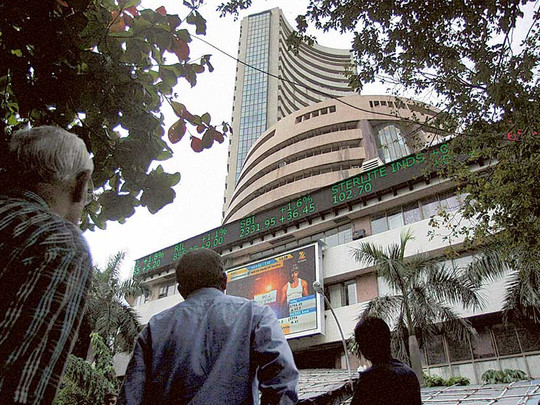
One of the dominant themes to emerge from the Financial Times’ recent ‘Redefining EM’ project was a widespread view that the mainstream emerging market indices are not fit for purpose.
Unfortunately, that is where the consensus ends. To paraphrase Tolstoy’s Anna Karenina, every unhappy investor is unhappy in their own way.
And while few commentators agree as to what, if anything, should be done to rectify the perceived faults in EM indices, fewer still have taken it into their own hands to actually address the issue by creating funds or indices that provide an alternative approach to investment.
Yet there are a few straws in the wind, with the likes of Loomis Sayles, Aberdeen Asset Management and Lombard Odier Investment Managers in the vanguard.
Indeed, Lombard Odier braved the storms sweeping the EM firmament to launch a vehicle in September, in the shape of its EM local government bond exchange traded fund.
The Swiss house is a proponent of so-called “smart beta”, which involves weighting stocks or bonds by some sort of “fundamental” measure rather than using the standard market capitalisation approach adopted by the mainstream indices. In the fixed-income world, market cap-weighting essentially means lending more to the most indebted countries and companies, which have a higher weighting in the indices by dint of their larger volume of outstanding debt.
Some, such as Kevin Corrigan, head of fundamental fixed income at Lombard Odier IM, do not believe this makes perfect sense. “There are too many lumpy borrowers, too much oversized debt from certain countries or issuers,” he says. “[Our] weighting reflects your capacity to pay rather than your ability to borrow.”
LOIM’s proprietary weighting methodology is based on two “building blocks”: economic allocation and an algorithm designed to favour countries with the highest liquidity and the most attractive yields. The economic allocation measure is based on three factors: the size of a country’s gross domestic product; indebtedness, as measured by public and private debt to GDP and current account balances; and “social imbalances”, such as the misery index calculated by the IMF and political stability, based on data from the World bank.
“We need to focus on willingness to pay, as well as ability,” Corrigan says of the latter factor.
As a result, LOIM’s EM local government bond ETF began life with a radically different composition from that of JPMorgan’s GBI-EM Global Diversified index, used as a benchmark by many rival funds. The JPM index excludes both China and India, as the barriers put in the way of foreign investors mean the duo fail to meet the bank’s investability criteria. In contrast, the LOIM fund has a combined weighting of almost 20 per cent in the two countries.
“Their contribution to GDP merits their inclusion. Investability is an issue, but they are starting to relax a little bit. They are looking to open up their capital markets more,” says Corrigan.
In practice, this means going through a quota system to get the Indian bonds, while the Chinese exposure is created by buying offshore, Hong Kong-listed bonds that LOIM says “have a very strong correlation with onshore bonds”.
But there are plenty of countries that do appear in the JPM index that the LOIM approach ascribes a very different weighting to. Commodity exporters such as Brazil, South Africa and Colombia have far lower weightings in the LOIM index. “They are much more economically challenged than China or India,” Corrigan says.
As a result, the LOIM index has outperformed the JPM one since 2013 (although both are nursing losses in absolute terms) as first commodity currencies and then the most indebted nations bore the brunt of the EM sell-off. Since 2005, the LOIM index has returned an annualised 5.8 per cent, compared with the 4.9 per cent of the JPM index, according to LOIM.
The house now manages $5 billion across its fundamental fixed-income range, and Corrigan says institutional investors are becoming increasingly open to the concept.
“We have very few doors shut in our face. Most people are worried and just a little bit sceptical that the traditional approaches are fit for purpose in the current environment,” he says, pointing to mounting concerns over index-driven herd behaviour driving investors into and out of the same securities at the same time.
“I think the narrative and discussion around the fundamental weighting in debt markets is probably growing more than ever before.”
Research Affiliates, a California-based pioneer of fundamental investing, with $14 billion of assets benchmarked against its EM equity smart beta strategies alone, also believes the concept is gaining traction among bond investors. “Smart beta has really taken off in equity markets. Fixed income is where the next growth area is,” says Jason Hsu, co-founder and vice-chairman of Research Affiliates.
“Who wants to be lending a lot of money to Argentina, rather than Taiwan or Korea, where financial markets are developed and they have a much stronger government balance sheet?”
However Hsu says another alternative approach — investing in emerging market-focused multinationals based in developed markets rather than directly in EM equity markets themselves — has not taken off. “I know some providers that explored it. I get a sense that it hasn’t resonated with investors. The largest multinationals are already meaningfully represented in traditional portfolios,” says Hsu.
“It was reasonable five years ago because it was expensive to set up an account and access emerging markets. Now there is easier access and people are increasingly looking for more direct exposure.”
Another widespread gripe is that whereas developed market fixed-income indices cover either investment grade or high-yield bonds, EM indices typically lump both together.
This approach is increasingly problematic for the likes of insurers and banks, which under new regulatory regimes face higher capital charges for holding junk bonds, as well as risk-averse pension funds.
“For some reason the emerging market indices combine investment grade and high yield. No other bond indices would do that,” says Peter Marber, head of emerging market investments at Loomis Sayles, a Boston-based house that has started to differentiate between the two.
“If you had two indices, people might put more money in the investment grade segment. Insurance companies and banks can move readily into that space because of the low capital charges. If a third of it is high yield, then some don’t want it.
“And high yield investors say, ‘I don’t want to buy that because it doesn’t yield enough; it’s two-thirds investment grade’.”
In the past year, Marber says the vast majority of new accounts his team has won have been for either investment grade or high-yield bonds, or for other customised mandates such as short duration, rather than being benchmarked against the standard bond indices.
Aberdeen Asset Management has taken a similar approach, launching an investment grade only EM bond fund at the start of the year. Brett Diment, head of emerging market debt, says it has seen “quite good” client demand, particularly from some German and Swiss investors that had been tempted to “dip their toes” into EM debt for the first time.
At the opposite end of the EM risk spectrum, Aberdeen announced a frontier sovereign bond fund in 2013 and is looking at launching a local currency corporate bond vehicle in the coming months.
“End investors still see emerging markets as being separate from developed markets. It is still a generic asset class. That is partly [due to] a sense that their capital markets are not as well developed and regulatory oversight is not as well developed,” says Diment.
“But the decision is not just we want emerging markets, it’s what sort of risk we want in emerging markets, eg credit or local currency bonds.”
Other investors are exercised by the definition of exactly what is an emerging market these days. The likes of Taiwan and South Korea are developed by many measures, while Gulf states such as Qatar are among the wealthiest countries on the planet.
Although Loomis Sayles does not manage any EM equity funds, Marber says he is aware that many of his largest clients are increasingly making their own country allocations, based on their own internal weightings.
The problem many of these sophisticated investors may find, though, is that fund managers are still very attached to the emerging markets label, says Craig Botham, EM economist at Schroders.
“I’ve always found it too broad a label to be meaningful. If you analyse the countries you know it covers such a broad range that a group description is not easy, but investors still refer to it and want descriptions for what the group as a whole is doing,” he says.
— Financial Times












